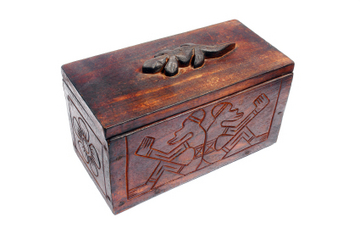|
African decor are mainly crafted to be traded.
The many various tribes, empires, kingdoms and civilizations that have risen, fallen and continue to thrive in Africa have long since flourished the continent and the world with magnificent works of art. Even the simplest utilitarian African decor and household items are considered historical art pieces of aesthetic aspect and spirituality. These types of African decor have gained worldwide interest and have been sought to be an exquisite part of individual homes all over the world.
When referring to African decor, this may come in a myriad of different tribal art items that were originally designed with various purposes and utilities in mind. The more modern forms however, though still made by native artisans are mainly crafted to be traded.
1.Acrylic and Oil Paintings
They mostly represent the various everyday tribal village scenes from surrounding natural bounty, the tragic calamities, to the vibrant ceremonial feats depicted by psychedelic forms and hues.
Contemporary art paintings, which are equally as enticing as the tribal ones, were borne out of the many foreign influences that were embraced by some of the African painters. Most of these modern works intensely portray the many issues that loom over the continent and the African diaspora including racial discrimination, corruption, and civil unrest.
The most common figures that circulate among the collectors are those stylistically diverse and sophisticated pieces of the Baule culture of the Ivory Coast. The wooden sculptures of human forms of the Baule were originally carved to link the world of the living and the supernatural. These are, commonly standing on a base, are exemplified by elongated necks, slightly bent legs, hands resting on the abdomen in a gesture of tranquility, and a face laden with raised scarification. One thing that makes Baule sculptures stand out is the artists’ meticulous attention in creating the finely detailed coiffeurs of the figures, often grouped into plaits.
3.Shadow Boxes
They are normally enclosed in fine frames that make the artworks within less susceptible to damage caused by exposure to light. The woods used to create them are of various kinds and textures, depending on the region and tribe from were the art piece came from. The crafts that are popularly coupled with shadow boxes include figurines, masks, beaded figures, and other abstracted works crafted from various African medium. They portray different roles of tribe members, wildlife, and other cultural and religious aspects of the tribe.
|
